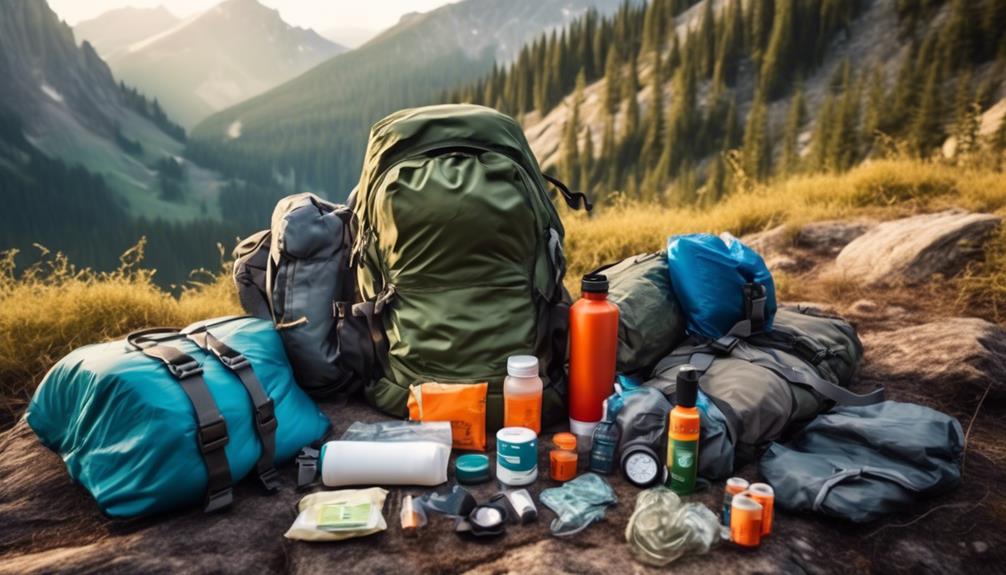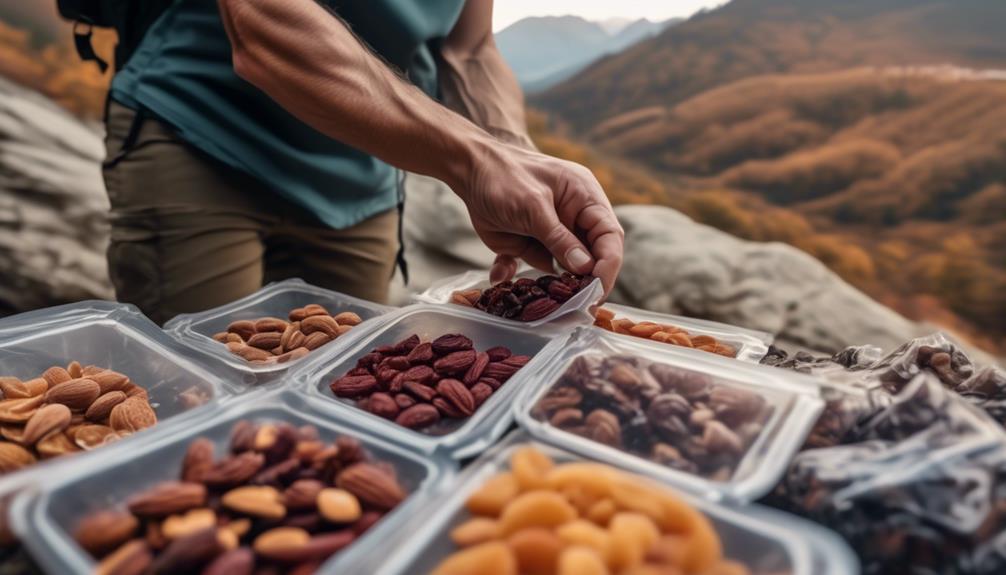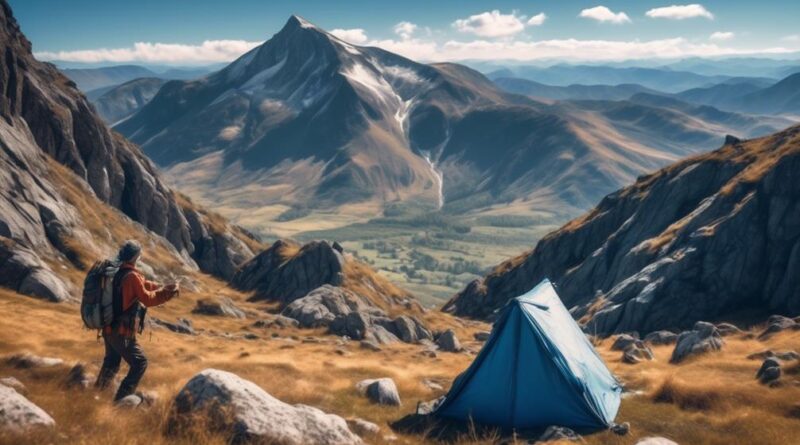Top 10 Tips for Wilderness Survival Training Holidays
You may think that wilderness survival training holidays are only for the most experienced outdoor enthusiasts, but with the right preparation and knowledge, anyone can benefit from this type of adventure.
Whether you're a beginner or have some experience in the wild, there are essential tips and skills that can make your wilderness survival training holiday both enjoyable and safe.
From choosing the right location to understanding local wildlife and plants, these top 10 tips will ensure that you're well-prepared for your next outdoor excursion.
Choosing the Right Location
When selecting a location for wilderness survival training, consider not only the natural features but also the accessibility of the area for your safety and convenience. Finding suitable terrain is crucial for your training experience. Look for areas with diverse landscapes such as forests, mountains, or deserts to practice different survival skills. Researching climate conditions is equally important. Understanding the typical weather patterns, temperature fluctuations, and potential natural hazards will help you prepare adequately.
Once you have narrowed down potential locations, assess the accessibility of each area. Consider how far it's from the nearest town or medical facilities. Additionally, look into the availability of clean water sources and the presence of wildlife for food. Accessibility also includes the ease of obtaining necessary permits and permissions to use the area for your training.
When considering the natural features of the area, look for a diverse range of flora and fauna as this will provide a more realistic training experience. Ensure that the terrain offers opportunities for learning essential skills such as building shelters, finding food, and navigating different landscapes.
Furthermore, don't overlook the importance of safety. Look for areas that aren't prone to extreme weather conditions or natural disasters. Avoid locations with a history of dangerous wildlife encounters. Your safety and well-being should always be a top priority when selecting a location for wilderness survival training.
Essential Survival Skills to Learn
To thrive in wilderness survival training, you must master essential skills such as building shelters, finding food, and navigating diverse landscapes.
Understanding fire making techniques is crucial for staying warm, purifying water, and signaling for help.
Learning to identify edible plants can provide a vital source of nutrition in the wild. However, it's equally important to be aware of poisonous plants to avoid.
Wilderness first aid is another indispensable skill. Knowing how to tend to wounds, treat sprains, and recognize symptoms of dehydration or hypothermia can make a critical difference in an emergency.
Additionally, being prepared for animal encounters is essential. Understanding animal behavior and knowing how to react when encountering wildlife can prevent dangerous situations.
In the wild, unexpected challenges can arise, and having a solid grasp of navigation is fundamental. Learning how to use a map and compass, as well as basic orienteering skills, can prevent getting lost in unfamiliar terrain.
Packing the Right Gear and Supplies

Mastering essential survival skills such as building shelters and identifying edible plants sets the foundation for packing the right gear and supplies for your wilderness adventure. When choosing the right equipment for your trip, consider the specific wilderness survival techniques you have learned and the environment you'll be exploring. Start with the basics: a reliable backpack, a sturdy tent, a sleeping bag suitable for the climate, and a waterproof tarp for additional shelter. Your choice of clothing is crucial, so opt for moisture-wicking layers, a durable pair of hiking boots, and a wide-brimmed hat to protect yourself from the elements.
In terms of supplies, prioritize items that serve multiple purposes to save space and weight. A multi-tool, a first aid kit, and a reliable water filtration system are indispensable. Pack lightweight, high-energy food such as trail mix, energy bars, and dehydrated meals. Don't forget a fire-starting kit, a map and compass, and a headlamp with extra batteries. Additionally, consider bringing a signaling device like a whistle or mirror for emergencies.
Remember to pack according to the specific needs of your trip. If you're venturing into bear country, bear-resistant food canisters are a must. If you're exploring a region known for heavy rain, pack extra waterproofing for your gear. By tailoring your gear and supplies to your destination and the skills you've learned, you'll be well-prepared for whatever challenges the wilderness may present.
Understanding Local Wildlife and Plants
Understanding local wildlife and plants is essential for your wilderness survival training, as it enables you to identify potential food sources and potential dangers in the environment. When it comes to identifying edible plants, it's crucial to learn about the flora in the area where you'll be staying. Your survival may depend on your ability to distinguish between edible plants and toxic ones. Joining a wilderness survival training holiday provides an excellent opportunity to learn about the local vegetation from experienced guides. They can teach you how to identify edible plants, such as berries, nuts, and roots, and how to avoid the harmful ones.
Additionally, being knowledgeable about local wildlife can help you avoid dangerous encounters. You'll need to understand the behavior of animals in the area and know how to react if you come across them. For example, learning to recognize signs of potential wildlife encounters and knowing how to respond can prevent dangerous situations. Your guides can educate you on the habits of different animals, including how to minimize the risk of confrontations with potentially dangerous creatures.
Building Shelter and Finding Water

When building shelter and finding water in the wilderness, your primary focus should be on securing a safe and dry place to rest, as well as locating a clean and reliable water source. Building a shelter can be done using natural materials such as branches, leaves, and moss. Look for a location that offers natural protection from the elements, like a cave or an area surrounded by large rocks. It's essential to insulate yourself from the ground by using leaves or branches to avoid losing body heat.
A fire starting skill is crucial for warmth, cooking, and signaling for help. Learn different methods such as using a fire starter kit, friction, or a magnifying glass.
Finding water is a top priority for survival. Look for sources such as rivers, streams, and lakes. However, it's important to purify the water to make it safe for consumption. Boiling is the most effective method, but if you don't have a container, you can make a solar still to collect water.
It's also important to forage for food. Learn how to identify edible plants, mushrooms, and insects. Having a survival mindset is crucial. Stay calm and focused, and conserve your energy. Remember that a positive attitude can greatly impact your ability to survive.
Navigating and Orienting Yourself
After securing a safe and dry shelter and finding a reliable water source, your next essential task in wilderness survival is to navigate and orient yourself in the unfamiliar terrain. Map reading and compass use are crucial skills for wilderness navigation. Always carry a detailed topographic map of the area and a reliable compass. Familiarize yourself with the map before venturing out, and continuously track your progress as you move. Use prominent landmarks and natural features to confirm your location and ensure you're heading in the right direction.
In addition to map reading and compass use, it's important to learn survival signaling techniques. In case you get lost or encounter an emergency, knowing how to signal for help can be a lifesaver. Carry a whistle or mirror for signaling, as well as knowledge of international distress signals. Three short whistle blasts or flashes of light in quick succession are recognized as a universal call for help.
Managing Food and Energy

To sustain yourself in the wilderness, it's crucial to efficiently manage your food and energy resources. When it comes to managing food, foraging techniques can be incredibly useful. Learn to identify edible plants and fruits in the area you're exploring. However, always proceed with caution as some plants may be harmful. It's also essential to understand the art of hunting and fishing if you have the necessary tools. These skills can provide you with a valuable source of protein. Remember to be mindful of your surroundings and the impact of foraging on the local ecosystem.
In addition to managing food, conserving energy is vital for your survival. Prioritize your tasks and avoid unnecessary physical exertion. Take regular breaks to avoid overexertion, and remember to stay hydrated. It's important to regulate your body temperature to avoid unnecessary energy expenditure. Dress appropriately for the weather and conserve energy by staying warm. Furthermore, be mindful of your movements to avoid injuries that can drain your energy reserves.
Safety and Emergency Preparedness
Ensure your safety and preparedness for emergencies in the wilderness by familiarizing yourself with essential survival skills and assembling a comprehensive emergency kit.
When venturing into the wilderness, it's crucial to be equipped to handle potential emergencies. Start by learning emergency first aid techniques tailored to the challenges of the wilderness. This includes understanding how to address common outdoor injuries such as cuts, burns, sprains, and insect bites. Wilderness first aid training will empower you to provide crucial medical care when help isn't immediately available.
In addition to first aid skills, mastering wilderness communication techniques is vital for ensuring your safety. Familiarize yourself with signaling methods such as using a mirror for reflecting sunlight, creating visible ground-to-air signals, and using whistle codes. Understanding how to utilize these techniques can greatly improve your chances of being located and rescued in a wilderness emergency.
Furthermore, your emergency kit should include items such as a reliable communication device, water purification tablets, a multi-tool, fire-starting materials, and high-energy snacks. Remember to pack extra clothing, a space blanket, and a headlamp with extra batteries. These items can make a significant difference in a survival situation.
Additionally, always inform someone of your planned itinerary and expected return time before heading into the wilderness, and be sure to check in with them upon your return.
Frequently Asked Questions
Can I Bring My Own Food and Supplies, or Do I Have to Rely Solely on What Is Provided During the Wilderness Survival Training?
You can bring your own food and supplies for the wilderness survival training. Personal equipment is allowed, but make sure to check with the organizers for any specific guidelines or restrictions before packing for the trip.
Are There Any Age Restrictions for Participating in Wilderness Survival Training Holidays?
Yes, there are age restrictions for wilderness survival training holidays to ensure safety measures are maintained. It's important to check with the training program for specific age requirements and any additional guidelines for participation.
What Is the Ratio of Instructors to Participants During the Training?
During the training, the ratio of instructors to participants is carefully maintained to ensure participant safety. All instructors have high qualifications in wilderness survival, providing you with a safe and educational experience.
Are There Any Specific Medical Certifications or Qualifications Required for the Instructors Leading the Wilderness Survival Training?
Yes, specific medical certifications or qualifications are required for the instructors leading the wilderness survival training. They need to have relevant training supplies and knowledge. Food options are also important for the training.
Can I Bring My Own Tent and Sleeping Bag, or Will These Be Provided During the Training?
Yes, you can bring your own tent and sleeping bag for the training. However, if you prefer, accommodations and equipment can also be provided. It's important to ensure you have the necessary gear for a comfortable experience.
Conclusion
So there you have it, 10 essential tips for getting the most out of your wilderness survival training holiday.
Remember to choose the right location, learn essential survival skills, pack the right gear, understand local wildlife and plants, build shelter and find water, navigate and orient yourself, manage food and energy, and always be prepared for safety and emergencies.
With these tips in mind, you'll be well-equipped for an unforgettable and rewarding wilderness adventure.
